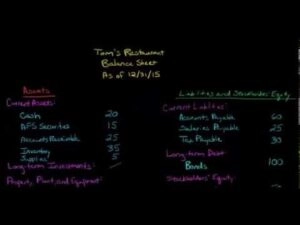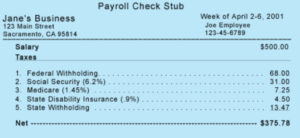
The purpose of reconciliation is to ensure the accuracy and ethics of a business’s financial records by comparing internal accounting records with external sources, such as bank records. This process helps detect errors, prevent fraud, ensure regulatory compliance, and provide reliable financial information for data-driven decision-making. This reconciliation process allows you to confirm that the records being compared are complete, accurate, and consistent. After finding evidence for all differences between the bank statement and the cash book, the balances in both records should be equal. You should prepare a bank reconciliation statement that explains the difference between the company’s internal records and the bank account.
This process requires you to compare internal records at the beginning and end of a financial cycle. It centerpoint fund accounting will let you see if the goods you sold or services you provided match up with your internal records. You would need to justify, explain, or correct any differences or discrepancies. When there are no unexplained differences, an accountant is able to sign off the process.
- When a parent company has several subsidiaries, the process helps identify assets.
- For the legal profession, however, regular, effective reconciliation in accounting is key to maintaining both financial accuracy and legal compliance—especially when managing trust accounts.
- The analytics review approach can also reveal fraudulent activity or balance sheet errors.
Analytics Review
Make sure that you verify every transaction individually; if the amounts do not exactly match, those differences will need further investigation. In general, reconciling bank statements can help you identify any unusual transactions that might be caused by fraud or accounting errors. In a company, bookkeepers, clerks, and accountants keep a record of these debits and credits. These should match up with what is the purpose of the cash flow statement external accounts like bank statements for month-end reconciliation. For lawyers, reconciliation in accounting is essential for ensuring that financial records are accurate, consistent, and transparent.
As such, a $40,000 discrepancy due to the missing transactions should be noted in the reconciliation, and an adjusting journal entry should be recorded. Reconciliation for prepaid assets checks the balances for different types of prepaid assets, factoring in transactions like additions and amortization. Prepaid assets, such as prepaid insurance, are gradually recognized as expenses over time, aligning with the general ledger. For example, a company can estimate the amount of expected bad debts in the receivable account to see if it is close to the balance in the allowance for doubtful accounts.
When the process has worked well, it will have picked up on any inaccuracies or instances of fraud. It also helps to flag any discrepancies, mistakes, or fraud in the company’s books. Any of these could have a serious detrimental impact on the financial health of a company. So, businesses should perform regular check-ups because these can contribute to their success. This typically involves the entry of a transaction into the general ledger in 2 separate places. In many companies, this would be a credit account and a debit account that show accounts payable.
Using a double-entry accounting system, as shown below, ABC credits cash for $2,000 and debits assets, which is the equipment, by the same amount. For the first job, ABC credits $500 in revenue and debits the same amount for accounts receivable. Once these previous steps are completed, you then check that your bank account statement balance is equal to the balance in your internal records. After checking for deposits or charges that have not been reflected, you then check for any error from the bank’s side in relation to completed transactions that are reflected in the bank account statement. These are transactions that are not pending but recorded as completed but have inherent errors in them.
Cash accounts using bank statement reconciliations
This helps identify timing delays in deposits, payments, fees, and interest that may have been recorded by one entity but not the other. A bank error is an incorrect debit or credit on the bank statement of a check or deposit recorded in the wrong account. Bank errors are infrequent, but the company should contact the bank immediately to report the errors. The correction will appear in the future bank statement, but an adjustment is required in the current period’s bank reconciliation to reconcile the discrepancy.
What are the two basic methods of account reconciliation?

Budget controllers can keep a tight leash on spending through this match-making exercise. They’ll check that the invoices your company must pay mirror the goods or services you took delivery of. Regardless of where the figures get taken from, the goal would also be similar. And the end result is always to find a zero balance between the 2 sets of figures. In a general sense, it demonstrates that balancing the books gets taken seriously. That can be vital should a company need to borrow, attract investors, or even put itself up for sale.
Account reconciliation is an accounting process, usually embarked on at the end of an accounting period, that makes sure financial accounting records are consistent and accurate. Generally done for general ledgers, account reconciliation involves the comparison of two independent but related records actual vs applied overhead to make sure that transactions and balances correspond with each other. Account reconciliation is necessary for asset, liability, and equity accounts since their balances are carried forward every year. During reconciliation, you should compare the transactions recorded in an internal record-keeping account against an external monthly statement from sources such as banks and credit card companies.
It accounts for transactions related to inventory and accounts payable and reconciles discrepancies. Additionally, it considers factors like the allowance for obsolescence and inventory valuation. This reconciliation involves rolling forward fixed asset balances, accounting for purchases, sales, retirements, and accumulated depreciation.

